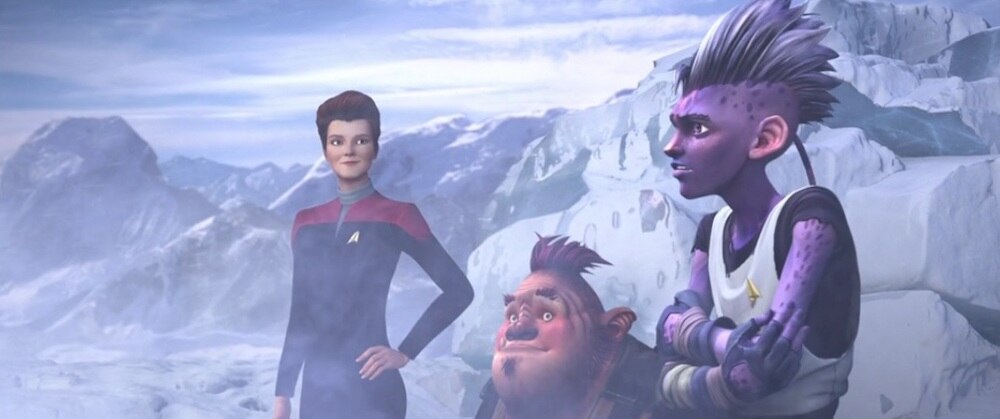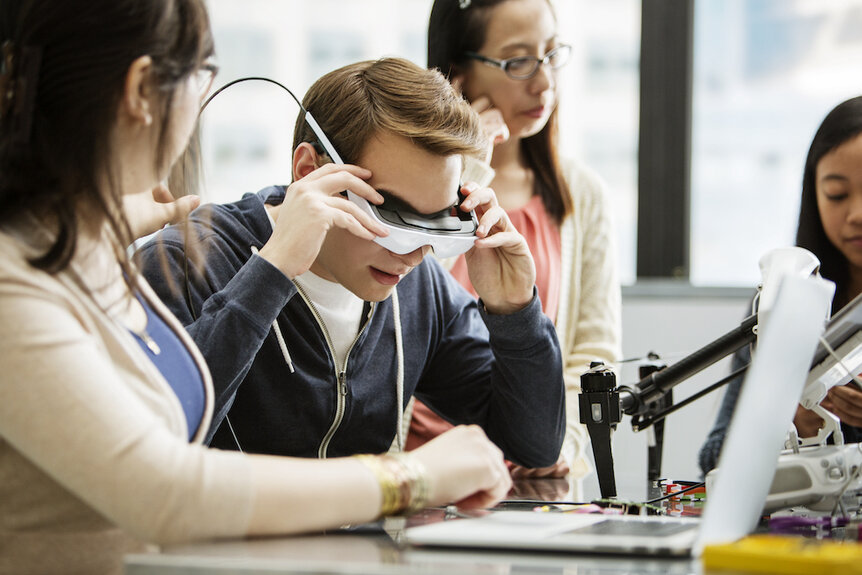Create a free profile to get unlimited access to exclusive videos, sweepstakes, and more!
Virtual reality teaching tools: The science behind Star Trek's holodeck
Schools of the future will take place more and more in virtual space.

Star Trek shows us a possible future version of humanity which has embraced technology — and our differences — in order to explore both the infinite expanses of the universe as well as our own interior. There's no Trek technology which makes the latter more possible than the holodeck. By designing virtual programs, individuals and teams are able to experiment with simulated realities to see what they're made of. Sometimes those realities become a little too real, putting the crew in danger or pushing at the boundaries of a person's self-image.
This week in Trek history saw both the anniversary of the Next Generation episode “The Big Goodbye,” in which the Enterprise crew gets trapped inside the holodeck, as well as the release of the Prodigy episode “Kobayashi,” in which the hologram Janeway uses the holodeck to teach Dal what it means to be a captain.
In both cases, the holodeck becomes a central part of the Starfleet experience by offering up virtual scenarios for the crew to experience the potential dangers and challenges of life on a starship. We don't yet have technology sufficient to craft holodecks of our own, but we do have increasingly impressive virtual reality which could help us educate and test the next generation of learners and explorers.
VIRTUAL REALITY AS A TEACHING TOOL
Scientists and researchers across disciplines are utilizing virtual reality as a way to craft controllable environments for testing specific phenomena. Animal studies have utilized VR in order to test the response of animals in dangerous scenarios without subjecting them to actual danger. It's basically a Kobayashi Maru for animals.
In terms of human education, the Virtual Human Interaction Lab at Stanford University is exploring ways of integrating virtual reality into classrooms to expand the sorts of experiences students are exposed to. While the majority of education based virtual reality studies have happened in a lab, Stanford's program is putting VR technology into middle school and high school classrooms and working with teachers to identify the pros and cons of the program.
These programs not only expand the sorts of scenarios kids have available—giving them the ability to explore faraway places like the oceans or deep space—but also increase educational opportunities during scenarios like the recent and ongoing pandemic.
A 2021 study showed a marked increase in the time children spent using virtual reality technologies after the onset of the pandemic, when time indoors was higher than typical. As our world becomes more distance-based and virtual, opportunities for students to gain an education in a virtual space will likely also increase. Optima Classical Academy in Naples, Florida, is set to take VR education to the limit later this year. They are currently accepting enrollment for the upcoming school year, preparing for what will be the world's first school existing entirely in virtual reality. Students who can't attend traditional schools for health or other reasons will have the opportunity to attend classes virtually in a 360-degree space.
Administrators are confident that this environment will be an improvement over other digital learning solutions like Zoom calls, many of which we all became acutely familiar with over the last two years. By holding classes in virtual reality, students will have an increased ability to interact with the environment, with teachers, and with classmates.
Further studies from the Stanford Virtual Human Interaction Lab indicate there is some benefit to these virtual environments which exceeds those available in situations like Zoom, where the primary mode of information transfer is verbal.
In a 2021 study they found that virtual environments allow for the creation of a “sense of presence” which improved an individual's overall experience of an event, as well as their ability to interact with it.
The majority of participants reported feeling as though they were actually present in the virtual environment — in this case a forest — that the environment felt real, and that they had the sense that they could reach out and touch it. Additionally, virtual avatars present in the simulation also felt as though they were real to participants, even though they knew objectively that they weren't.
Moreover, participants were more likely to interact with a virtual avatar and follow their advice or instructions, than they were without a virtual environment and avatar. While the study itself was exploring personal relationships with a spiritual or religious entity, the findings have implications for education both at the grade school level and beyond.
We might still be a couple centuries away from interstellar starships and fully immersive holodecks, but virtual reality devices are becoming more ubiquitous both in the home and elsewhere. It shouldn't be much of a surprise that they're bleeding into education and training scenarios and all evidence suggests that's a good thing.
Some virtual situations are no-win scenarios, but in the reality of VR education, it looks like we can't lose.



























